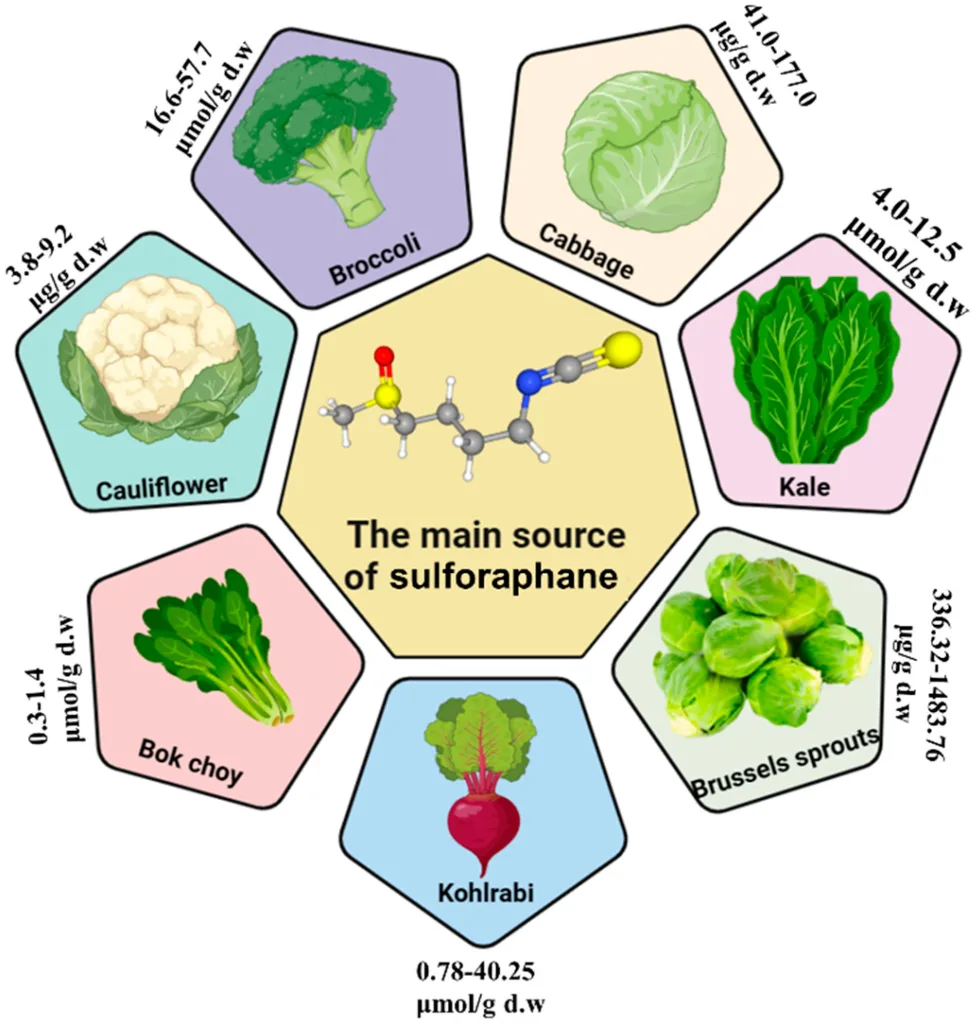7 Main Advantages of Sulforaphane + Dosage, Facet Results & Bulk Provide | aiherba.com
Searching for a highly effective natural extract with actual science behind it? Sulforaphane, a compound naturally present in cruciferous greens like broccoli, is a rising star on the planet of plant extract powders. Recognized for its detoxifying, anti-inflammatory, and antioxidant advantages, sulforaphane is extensively used as a dietary complement, beauty ingredient, and even a meals additive in practical meals and drinks.
Whether or not you’re a complement model, meals producer, or skincare formulator, right here’s every part you’ll want to find out about sulforaphane extract — from its well being advantages and really useful dosage to sourcing high-quality natural plant extracts with custom-made specs.
What is Sulforaphane?
Sulforaphane is a naturally occurring phytochemical present in excessive concentrations in broccoli sprouts, in addition to kale, cabbage, and Brussels sprouts. It’s shaped when the enzyme myrosinase interacts with glucoraphanin, sometimes by chewing or chopping.
At aiherba.com, we produce sulforaphane-rich natural extract powder from non-GMO broccoli sprouts, providing constant efficiency and custom-made natural extract specs based mostly on consumer wants. Our merchandise are made in a GMP-certified manufacturing facility, making certain security, purity, and traceability.
What Are the Substances?
The primary bioactive compound is sulforaphane, typically standardized to 0.5%–1% or larger in plant extract powder type. Supporting elements might embody glucoraphanin, myrosinase, and different naturally occurring antioxidants present in cruciferous crops.
Our natural extract choices are additionally obtainable on request, appropriate for clean-label formulations and health-focused product traces.
Key Advantages of Sulforaphane Extract
Listed here are the high 7 well being advantages of sulforaphane which can be backed by analysis:
- Highly effective Antioxidant Assist
Neutralizes dangerous free radicals and protects cells from oxidative stress. - Helps Cleansing Pathways
Promotes part II detox enzymes like glutathione S-transferase (GST), aiding liver perform. - Anti-inflammatory Properties
Helps cut back continual irritation linked to getting old and illness. - Cognitive and Mind Well being
Some research counsel sulforaphane might assist enhance reminiscence, focus, and defend mind cells. - Pores and skin Safety and Anti-aging
Generally utilized in beauty uncooked supplies for its function in decreasing UV-induced injury. - Coronary heart Well being
Could enhance vascular perform and cut back blood stress. - Potential Most cancers Prevention
Animal and lab research point out sulforaphane might assist inhibit the expansion of sure most cancers cells.

How Efficient Is It?
Sulforaphane’s effectiveness relies upon largely on dosage, bioavailability, and extract high quality. That’s why selecting a high-purity plant extract powder from a dependable natural extract provider is essential. Our GMP manufacturing line ensures constant lively compound ranges for optimum outcomes.
The best way to Take Sulforaphane + Dosage Plan
- Beneficial Day by day Dose: 10–40 mg of lively sulforaphane
- Type: Capsules, powders, tablets, or blended into drinks
- Greatest taken: With a meal containing fats for higher absorption
Our extract powders may be formulated into dietary dietary supplements, practical drinks, or used as a meals additive in superfood blends.
Are There Any Facet Results?
Sulforaphane is taken into account secure when taken in acceptable quantities. Nevertheless, some folks might expertise:
- Gentle digestive upset (bloating, fuel)
- Elevated urination because of detoxing results
- Short-term adjustments in bowel actions
Excessive doses will not be really useful for folks on blood-thinning drugs or these with thyroid issues. At all times seek the advice of with a healthcare skilled earlier than use.
Who Ought to Use Sulforaphane?
- Complement manufacturers focusing on immune assist, anti-aging, or detox
- Meals producers creating practical meals and beverage components
- Skincare corporations formulating pure anti-aging merchandise
- Well being-conscious people on the lookout for each day detox and antioxidant assist
We additionally supply free pattern natural extract choices for R&D testing earlier than inserting bulk orders.
Manufacturing facility Direct Provide – Personalized Natural Extract Producer
Shaanxi Zhonghong Investment Technology Co., Ltd., based mostly in China, is knowledgeable natural extract producer specializing in sulforaphane extract and different high-quality plant extract powders.
- GMP-certified manufacturing facility
- Bulk orders and wholesale pricing
- Personalized specs obtainable (purity, mesh dimension, carrier-free, and so on.)
- Free samples and full COA assist
- Quick turnaround and world delivery
📌 Contact Data:
- Web site: aiherba.com
- E mail: gross sales@aiherba.com | information@aiherba.com | liaodaohai@gmail.com
Continuously Requested Questions (FAQ)
Q1: Is your sulforaphane extract synthetic or natural?
All our sulforaphane is 100% pure plant extract from broccoli sprouts.
Q2: Can I request an natural model?
Sure, we provide natural plant extract choices upon request.
Q3: Do you supply free samples?
Sure, we offer free pattern natural extracts for lab and manufacturing testing.
This fall: What’s the everyday shelf life?
24 months in sealed packaging, saved in a cool, dry place.
Q5: Can I get a custom-made specification for formulation?
Completely — we concentrate on custom-made natural extract options tailor-made to your product line.
Abstract
Sulforaphane is a potent natural extract that gives wide-ranging advantages for detox, antioxidant protection, and anti-aging. It’s an ideal match for the dietary complement, beauty, and practical meals industries.
For bulk sulforaphane extract, free samples, custom-made formulation wants, or factory-direct pricing, select Shaanxi Zhonghong Investment Technology Co., Ltd. as your trusted natural extract producer.
References
- Zhang Y. “Most cancers-preventive isothiocyanates: Chemistry and mechanisms of motion.” Pharmacol Ther. 2004.
- Fahey JW et al. “Sulforaphane: Translational analysis from laboratory bench to clinic.” Vitamin Opinions. 2015.
- Myzak MC et al. “Sulforaphane inhibits histone deacetylase exercise in BPH cells.” Most cancers Res. 2004.
